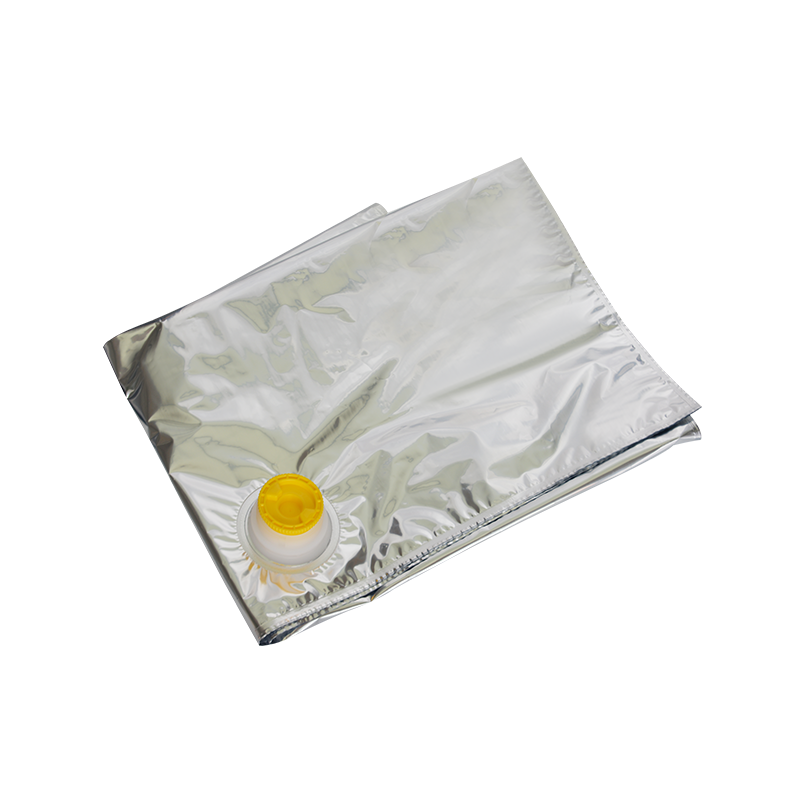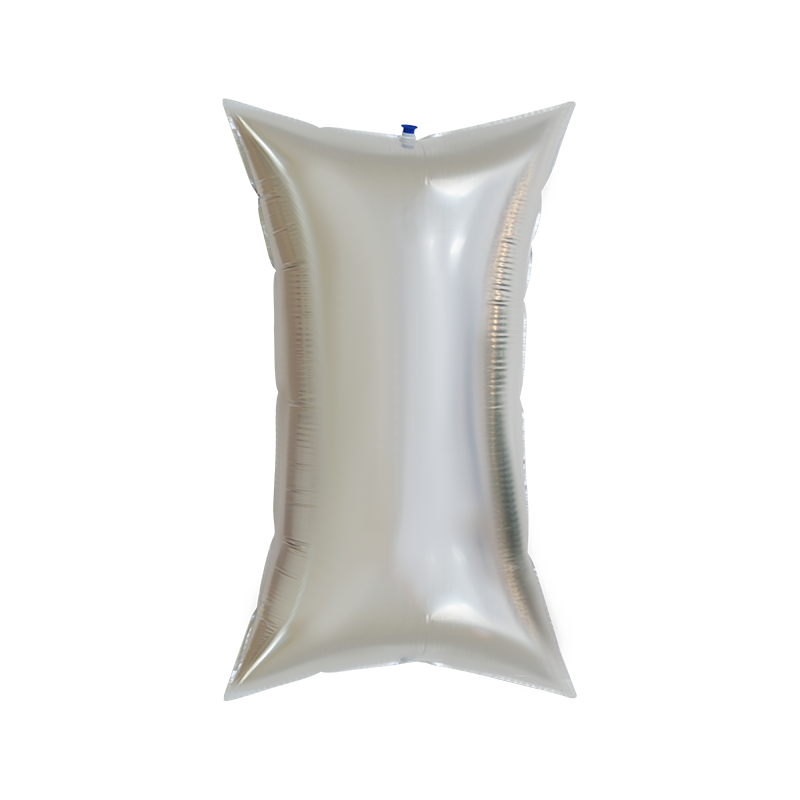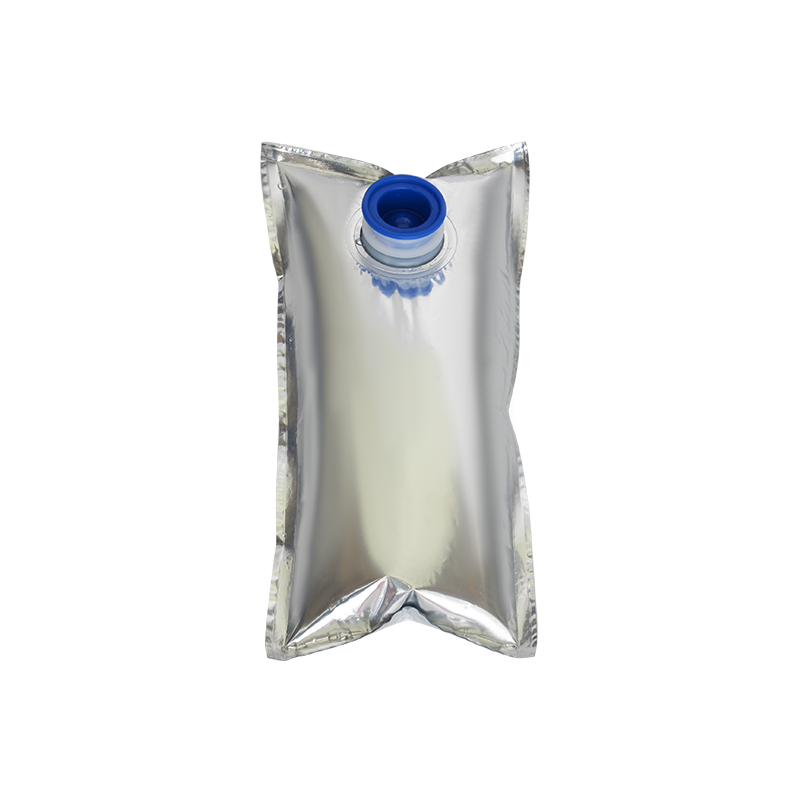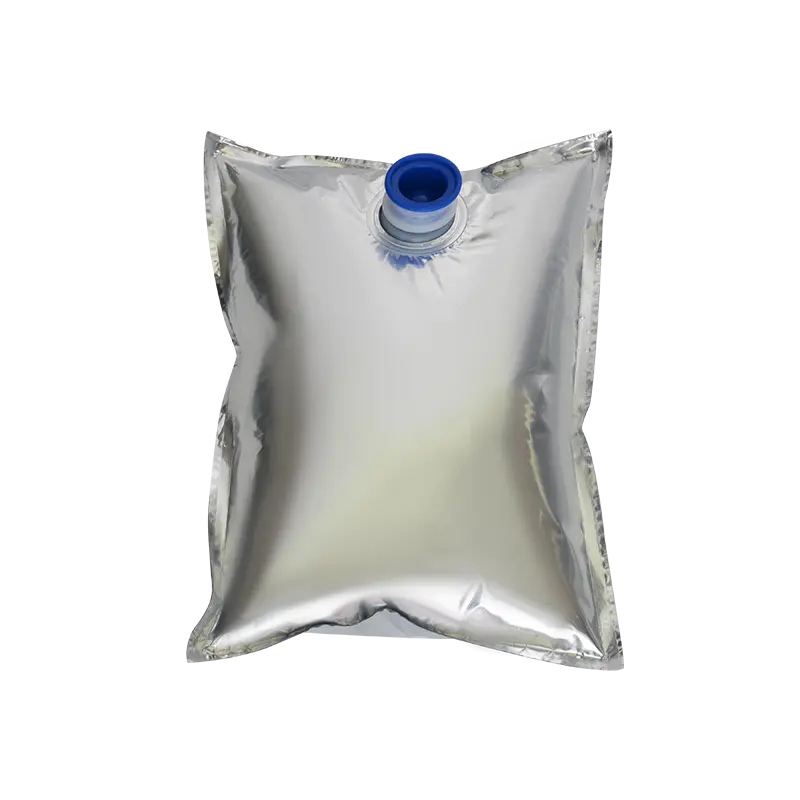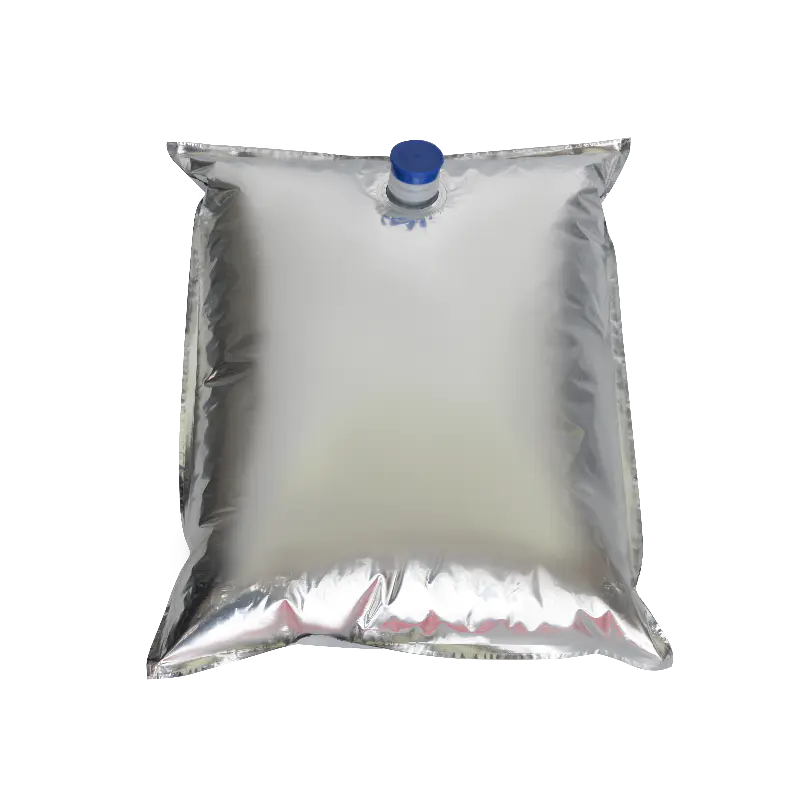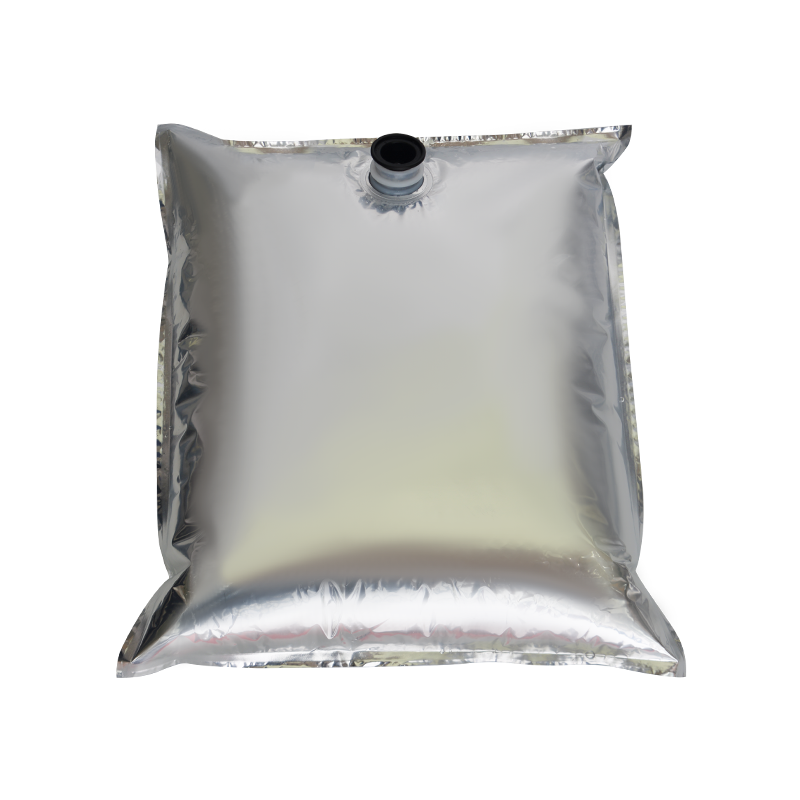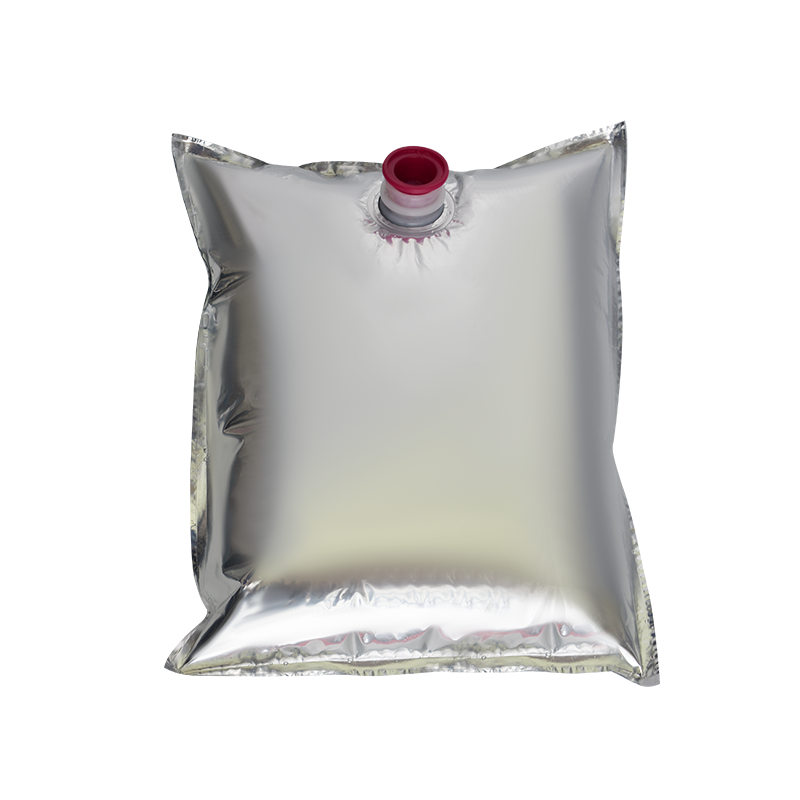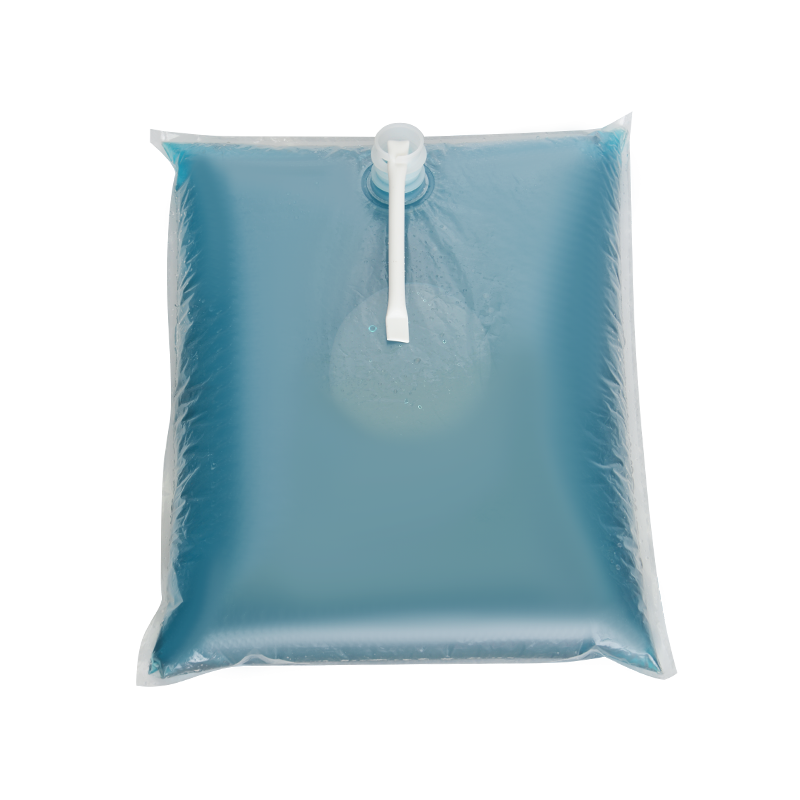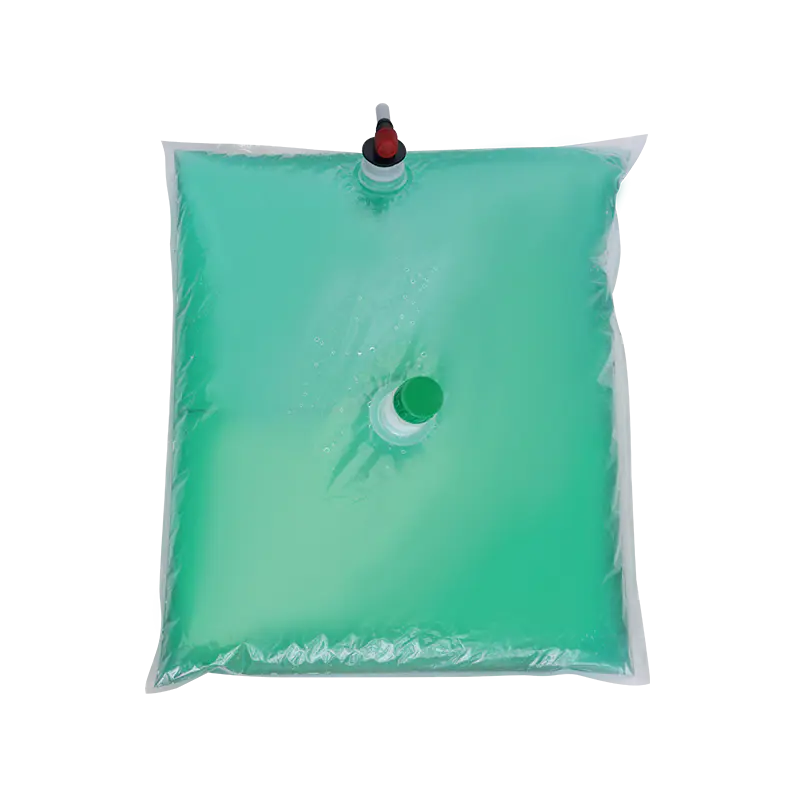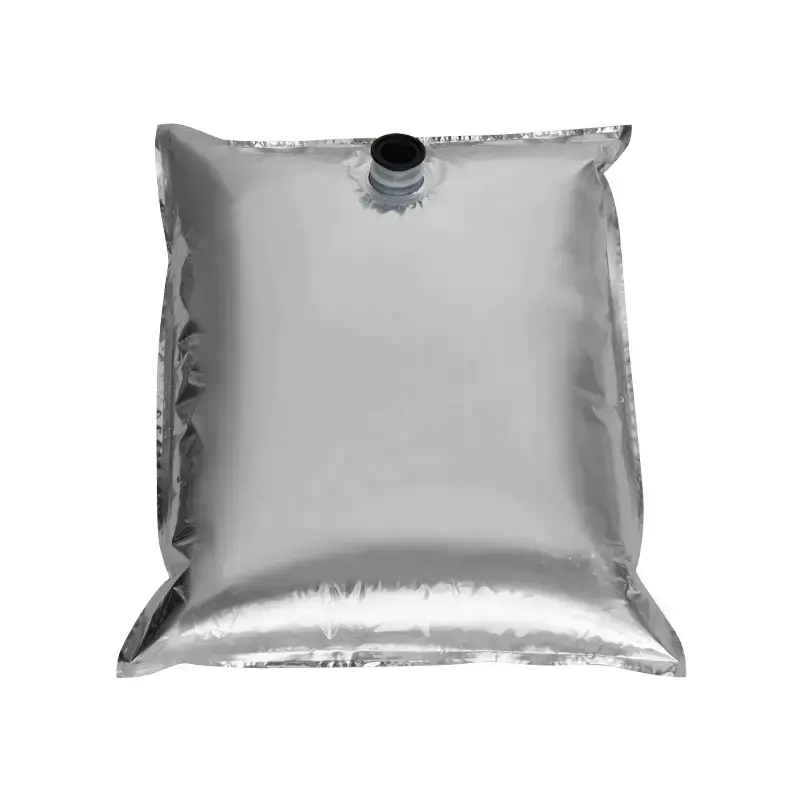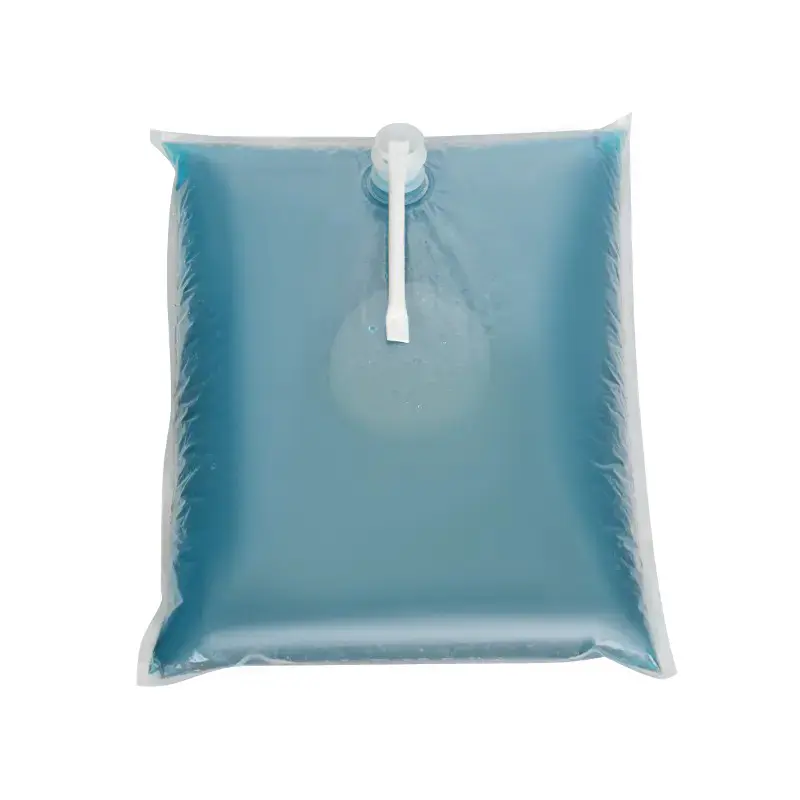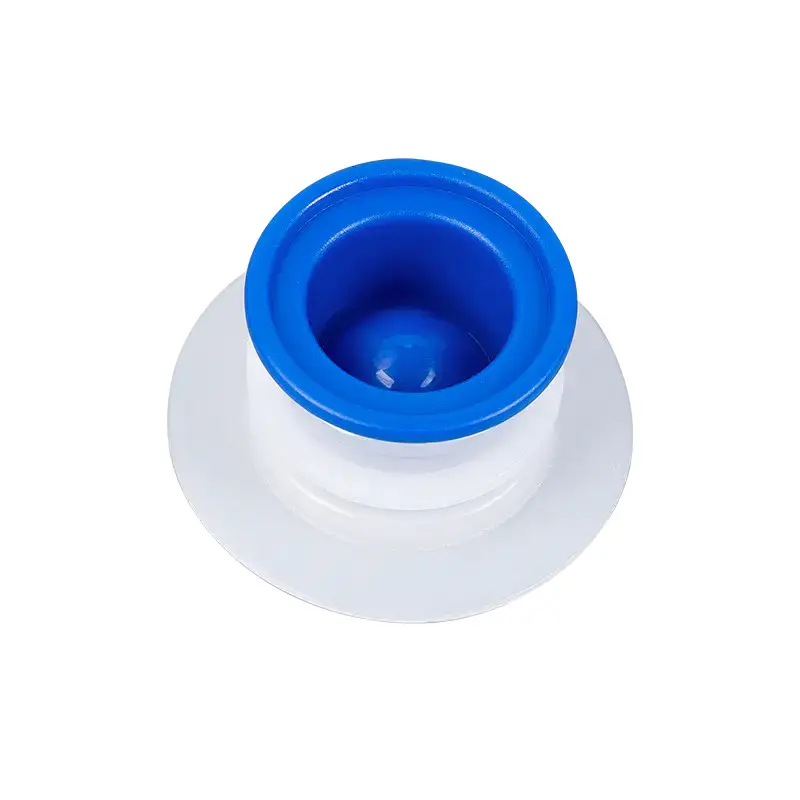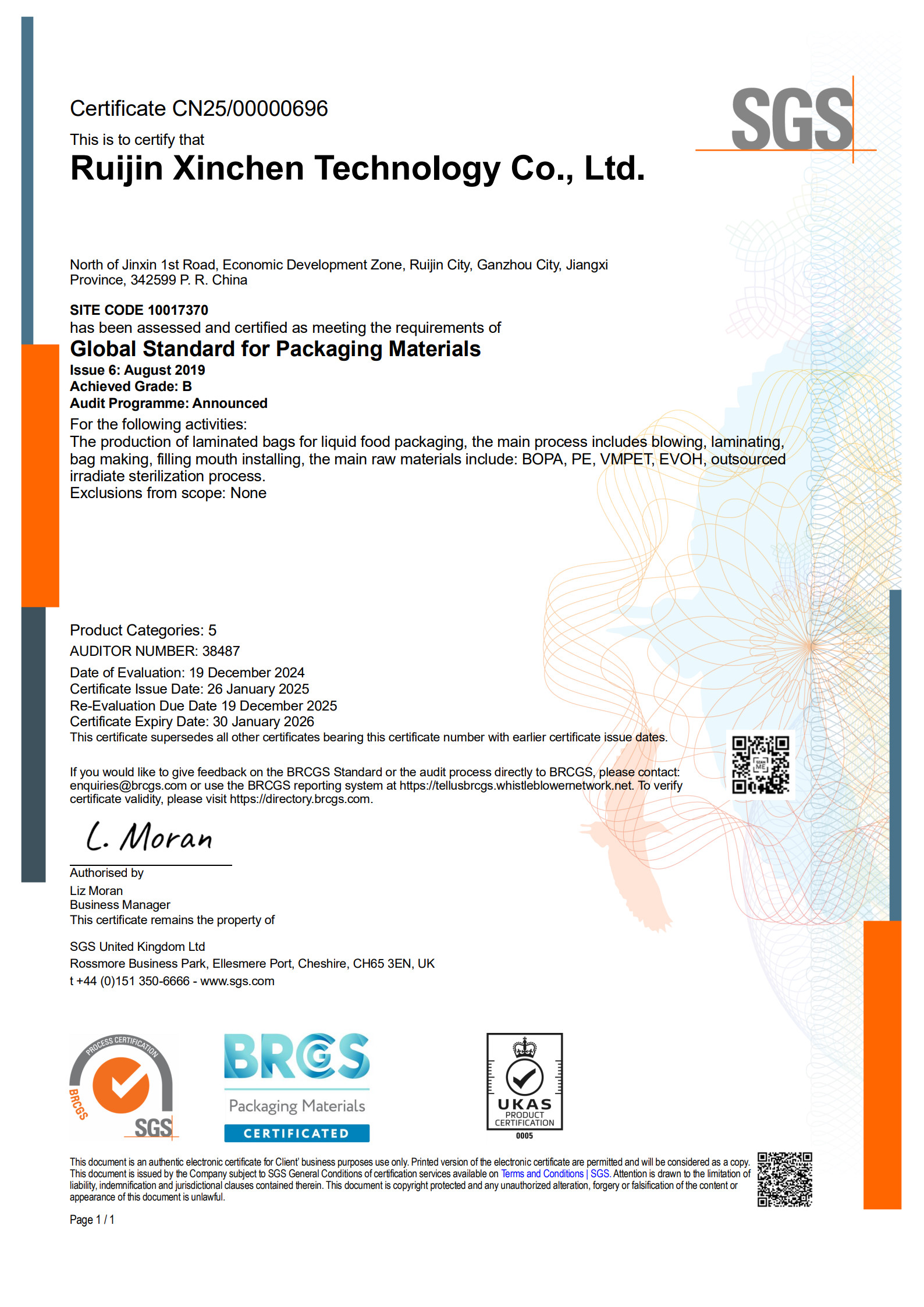
1. Introduction
In the ever - evolving landscape of packaging solutions, aseptic bags have emerged as a game - changing technology. These bags play a crucial role in maintaining the integrity, safety, and quality of a wide range of products, especially in the food and pharmaceutical sectors. Aseptic packaging is a process that prevents microorganisms from entering the package during and after the packaging process. Aseptic bags, as a key component of this process, are designed to meet strict hygiene and safety standards, ensuring that the products they contain remain uncontaminated and in optimal condition for extended periods.
2. Materials Used in Aseptic Bags

2.1 Polyethylene
Polyethylene is a fundamental material in aseptic bag construction. It serves as a barrier on both the inner and outer sides of the aseptic packaging. These layers are essential for preventing moisture from either entering or leaving the container. Moisture can be a significant factor in product spoilage, especially for food items like fruit juices, dairy products, and liquid eggs. For example, in the case of fruit juices, excessive moisture ingress can dilute the flavor and change the texture, while moisture loss can lead to concentration and affect the taste. By creating a moisture - resistant barrier, polyethylene helps maintain the product's original quality. There are different types of polyethylene used, such as low - density polyethylene (LDPE) and linear - low - density polyethylene (LLDPE). LDPE is known for its flexibility and good impact resistance, which is beneficial for bags that need to be handled during the filling and transportation processes. LLDPE, on the other hand, offers enhanced strength and puncture resistance, making it suitable for applications where the bag may be subject to more rigorous handling or when it needs to hold heavier products.
2.2 Aluminum Film Foil
Aluminum film foil is another critical component in aseptic bags. Its primary function is to preserve the product by blocking out light and oxygen. Light can cause photo - degradation in many products. In the food industry, this can lead to the loss of color, flavor, and nutritional value. For instance, in dairy products like milk or yogurt, exposure to light can cause the breakdown of riboflavin (vitamin B2), resulting in a loss of its yellow - green color and a change in taste. Oxygen is also a major culprit in product spoilage. It can initiate oxidation reactions in food products, leading to rancidity in fats and oils, and can also cause the growth of aerobic microorganisms. Aluminum foil provides an excellent barrier against both light and oxygen, ensuring that the product inside the aseptic bag remains fresh and of high quality for a longer time. The thickness of the aluminum foil used in aseptic bags can vary depending on the specific requirements of the product. Thicker foils offer greater barrier protection but may also increase the cost and weight of the bag. Manufacturers carefully balance these factors to optimize the performance of the aseptic bag for different applications.
2.3 Other Materials
In addition to polyethylene and aluminum foil, aseptic bags may also incorporate other materials such as ethylene - vinyl alcohol (EVOH) copolymers and metallized polyester (PET). EVOH is highly valued for its exceptional gas barrier properties, especially against oxygen. It can be used in combination with other materials to further enhance the overall barrier performance of the aseptic bag. Metallized PET provides a shiny, reflective surface that not only adds an aesthetic appeal but also contributes to the bag's ability to block light. These materials are often laminated or co - extruded together to create a multi - layer structure that offers the combined benefits of each component. For example, a typical aseptic bag structure might consist of an inner layer of LDPE for product contact and flexibility, a middle layer of EVOH for gas barrier, an aluminum foil layer for light and oxygen barrier, and an outer layer of metallized PET for additional light protection and strength. The number of layers and their specific arrangements are carefully engineered to meet the unique requirements of different products, ensuring maximum product protection and shelf - life extension.
3. Types of Aseptic Bags
3.1 High - Volume Aluminum - Plastic Composite Aseptic Bags (5 - 200 L)
These large - volume aseptic bags are commonly used in the industrial and bulk - food sectors. They are designed to hold significant quantities of liquid products. In the food industry, they are widely employed for packaging items such as tomato concentrate, tomato paste, and large - scale production of fruit and vegetable juices. For example, in tomato processing plants, large - volume aseptic bags can store and transport thousands of liters of tomato concentrate. The aluminum - plastic composite structure provides excellent barrier properties against moisture, oxygen, and light, which are crucial for maintaining the quality of these products over long - distance transportation and extended storage periods. The bags are often used in combination with outer protective containers, such as plastic or metal drums, to provide additional strength and protection during handling. These aseptic bags are also used in the pharmaceutical industry for storing and transporting large volumes of liquid medications or raw materials. The ability to maintain sterility and product integrity is of utmost importance in this industry, and the high - volume aluminum - plastic composite aseptic bags meet these stringent requirements.
3.2 Low - Volume Co - Extruded Film Aseptic Bags (200 - 500 ml)

Low - volume co - extruded film aseptic bags are more commonly found in consumer - facing products. They are used for packaging smaller quantities of products such as single - serving fruit juices, sauces, and some dairy products like individual yogurt cups. Co - extrusion is a process where multiple layers of different polymers are combined during the film - making process. This allows for the creation of a film with customized properties. The inner layer can be designed to be food - contact safe and flexible, while the outer layers can provide barrier properties and strength. These bags are often used in applications where convenience and portion control are important. In the case of single - serving fruit juices, the aseptic packaging ensures that the product remains fresh and free from contamination until it is consumed. The low - volume aseptic bags are also lightweight, which makes them easy to handle and transport, and they contribute to reducing packaging waste compared to traditional glass or plastic containers. In the food service industry, these small - sized aseptic bags are used for packaging condiments like ketchup, mustard, and salad dressings, providing a hygienic and convenient option for both consumers and food providers.
4. Applications of Aseptic Bags
4.1 Food Industry
4.1.1 Tomato Products
Aseptic bags are extensively used in the tomato product industry. Tomato concentrate, tomato paste, and tomato pulp are all commonly packaged in aseptic bags. Tomato products are highly susceptible to spoilage due to their high acidity and the presence of natural enzymes. Aseptic packaging helps to maintain the color, flavor, and nutritional value of these products. For example, in the production of tomato paste, the aseptic bag prevents the ingress of microorganisms, which can cause fermentation and spoilage. The aluminum - plastic composite material of the aseptic bag also protects the tomato paste from light and oxygen, preventing oxidation and the associated loss of color and flavor. These bags are often used in large - scale tomato processing plants, where they can be filled with thousands of liters of tomato products and then transported to different parts of the world. The aseptic packaging allows for long - term storage without the need for refrigeration, reducing the overall cost of production and distribution.
4.1.2 Fruit and Vegetable Juices
Fruit and vegetable juices are another major application area for aseptic bags. Fresh - squeezed juices are highly perishable, and aseptic packaging offers a solution to extend their shelf life. Aseptic bags protect the juices from microbial contamination, as well as from the negative effects of light and oxygen. For instance, orange juice is rich in vitamin C, which is sensitive to oxidation. Aseptic packaging helps to preserve the vitamin C content, as well as the natural color and flavor of the juice. The bags can be used for both single - serving and multi - serving sizes. In the case of multi - serving sizes, they are often used in foodservice establishments or for home - use packs. The aseptic packaging also allows for the use of natural ingredients without the need for excessive preservatives, appealing to health - conscious consumers.
4.1.3 Dairy Products
Dairy products such as milk, yogurt, and cream can also be packaged in aseptic bags. Aseptic packaging helps to maintain the freshness and quality of these products. In the case of milk, aseptic packaging can extend its shelf life significantly, allowing for longer - distance transportation and storage without refrigeration in some cases. This is particularly beneficial in regions where refrigeration infrastructure may be limited. For yogurt, aseptic packaging ensures that the live cultures in the yogurt remain viable, and the product does not spoil due to microbial contamination. The flexibility of aseptic bags also allows for creative packaging designs, such as stand - up pouches for single - serving yogurt, which are convenient for consumers on - the - go.
4.1.4 Sauces and Condiments
Sauces and condiments like ketchup, mustard, and salad dressings are often packaged in aseptic bags. These products have complex formulations, and aseptic packaging helps to maintain their stability and prevent spoilage. For example, ketchup contains vinegar, sugar, and tomatoes, and it is prone to microbial growth if not properly packaged. Aseptic bags provide a sterile environment, protecting the ketchup from contamination. The barrier properties of the aseptic bag also prevent the loss of volatile flavor compounds, ensuring that the sauce retains its original taste. In the case of salad dressings, which may contain oil and water - based ingredients, aseptic packaging helps to prevent separation and maintain the emulsion, resulting in a consistent product quality.
4.1.5 Liquid Egg Products
Liquid egg products, such as liquid whole eggs, egg whites, and egg yolks, are packaged in aseptic bags. Eggs are a rich source of nutrients and are highly perishable. Aseptic packaging ensures that the liquid egg products remain free from microbial contamination, extending their shelf life. This is especially important in the food service industry, where large quantities of liquid egg products are used. The aseptic bags can be easily dispensed, making them convenient for commercial kitchens.
4.2 Pharmaceutical Industry
In the pharmaceutical industry, aseptic bags are used to ensure that drugs and pharmaceutical products are not contaminated with harmful bacteria. They are used for storing and transporting liquid medications, such as injectable drugs, as well as for packaging sterile raw materials and intermediates. The strict requirements for sterility in the pharmaceutical industry make aseptic bags an ideal choice. For example, in the production of intravenous (IV) fluids, aseptic bags are used to package the fluids in a sterile environment. The bags are designed to maintain their integrity and sterility during storage and transportation, ensuring that the IV fluids are safe for patient use. Aseptic bags are also used in the development and production of biopharmaceuticals, where maintaining the purity and integrity of the product is of utmost importance. The ability to control the manufacturing environment and ensure sterility from the production of the bag to the filling and sealing process makes aseptic bags a reliable option for pharmaceutical applications.
5. The Aseptic Packaging Process
5.1 Thermal Sterilization of the Product
The first step in the aseptic packaging process is the thermal sterilization of the product. This is typically done using high - temperature short - time (HTST) or ultra - high - temperature (UHT) processing. In HTST processing, the product is heated to a high temperature, usually around 72 - 75°C, for a short period, typically 15 - 30 seconds. This is sufficient to kill most of the harmful microorganisms present in the product while minimizing the impact on the product's quality, such as its taste, color, and nutritional value. UHT processing, on the other hand, involves heating the product to an even higher temperature, around 135 - 150°C, for a very short time, usually less than 5 seconds. This extreme heat treatment can achieve a higher level of sterilization, making the product shelf - stable at room temperature for an extended period. The choice between HTST and UHT depends on the nature of the product.
5.2 Sterilization of Packaging
The packaging, in this case, the aseptic bag, also needs to be sterilized. There are several methods used for sterilizing aseptic bags. One common method is using hydrogen peroxide. The aseptic bag is exposed to a mist or spray of hydrogen peroxide, which is a powerful disinfectant. The hydrogen peroxide penetrates the bag material, killing any microorganisms present on its surface. After exposure to hydrogen peroxide, the bag is usually heated or exposed to ultraviolet (UV) light to decompose the hydrogen peroxide, leaving no residue. Another method is using gamma radiation. The aseptic bags are irradiated with gamma rays, which have high energy and can penetrate the bag material to kill microorganisms. Gamma radiation is effective in achieving a high level of sterilization, but it requires specialized equipment and safety precautions. The choice of sterilization method depends on factors such as the type of bag material, the cost, and the regulatory requirements.
5.3 Maintaining Sterilization During Packaging
Once both the product and the packaging are sterilized, it is crucial to maintain sterility during the packaging process. This is achieved by conducting the filling and sealing operations in a sterile environment. Packaging machines are designed to create a controlled atmosphere where the risk of microbial contamination is minimized. For example, some packaging machines use laminar air flow systems, where a continuous stream of filtered air is directed over the product and packaging area. This air flow helps to prevent the entry of airborne microorganisms. The filling and sealing mechanisms are also designed to be aseptic. The filling nozzles are carefully designed to ensure that they do not introduce any contaminants into the product as it is being filled into the aseptic bag. After filling, the bag is sealed using heat - sealing or other appropriate sealing methods in a way that maintains the sterility of the package. This strict control over the packaging process ensures that the final product in the aseptic bag remains sterile and safe for consumption or use.
6. Advantages of Aseptic Bags
6.1 Maintaining Product Quality
Aseptic bags are highly effective in maintaining the quality of the products they contain. By preventing the entry of microorganisms, light, and oxygen, they help to preserve the color, flavor, texture, and nutritional value of food products. In the case of pharmaceutical products, they ensure the stability and efficacy of the drugs. For example, in fruit juices, the aseptic bag helps to keep the natural color and flavor of the fruit intact, as well as preserving vitamins and antioxidants. In pharmaceutical drugs, the aseptic environment within the bag prevents degradation of the active ingredients, ensuring that the drug remains potent and safe for use.
6.2 Increased Shelf Life
One of the most significant advantages of aseptic bags is the ability to extend the shelf life of products. In the food industry, products packaged in aseptic bags can often be stored at room temperature for several months or even years without spoiling. For example, aseptically packaged tomato paste can have a shelf life of up to 2 - 3 years. In the pharmaceutical industry, aseptic bags can help to maintain the integrity of drugs for their entire shelf - life, which is crucial for ensuring patient safety and the effectiveness of the treatment. This extended shelf life reduces product waste and allows for more efficient distribution and storage of products.
6.3 Less Waste in Packaging
Aseptic bags are generally more lightweight compared to traditional packaging materials such as glass or metal containers. This reduces the amount of packaging waste generated. In addition, the flexibility of aseptic bags allows for more efficient use of space during storage and transportation. For example, compared to bulky glass bottles, aseptic bags can be stacked more easily, taking up less space in warehouses and transport vehicles. This not only reduces waste but also leads to cost savings in terms of storage and transportation. In the long run, the use of aseptic bags contributes to more sustainable packaging practices.
6.4 Less Product Waste
Since aseptic bags help to maintain product quality and extend shelf life, they also reduce product waste. In the food industry, fewer products are discarded due to spoilage, which is a significant benefit for both producers and consumers. For example, in the case of dairy products, aseptic packaging can reduce the amount of milk or yogurt that is wasted due to spoilage before it can be consumed. In the pharmaceutical industry, ensuring the integrity of drugs in aseptic bags means that fewer drugs need to be discarded due to contamination or degradation, which is not only cost - effective but also important for ensuring the availability of medications.
6.5 Energy Efficiency
The production and use of aseptic bags can be more energy - efficient compared to some traditional packaging methods. For example, the thermal sterilization processes used in aseptic packaging, such as HTST and UHT, are relatively energy - efficient ways of sterilizing products. Additionally, the lightweight nature of aseptic bags reduces the energy required for transportation. Since less energy is needed for both production and transportation, aseptic bags contribute to a lower overall carbon footprint in the packaging supply chain.
6.6 Resource Efficiency
Aseptic bags are often made from materials that are more resource - efficient to produce. For example, polyethylene, which is commonly used in aseptic bags, is a widely available and relatively inexpensive material. The use of aluminum foil in aseptic bags, while providing excellent barrier properties, requires less material compared to using a full - metal container. This efficient use of resources helps to conserve natural resources and reduce the environmental impact of packaging production.
6.7 Economical Solution for Packing and Transporting Liquid Food in Large Quantities
Aseptic bags offer a cost - effective solution for packing and transporting large quantities of liquid food. The lower cost of materials, reduced packaging waste, and energy - efficient production and transportation all contribute to cost savings. In addition, the extended shelf life of products in aseptic bags reduces the need for frequent restocking and the associated costs. For example, in the tomato processing industry, using aseptic bags to transport large volumes of tomato concentrate is more economical compared to using traditional drums or containers. The aseptic bags are also easier to handle and fill, further reducing labor costs.

 English
English русский
русский